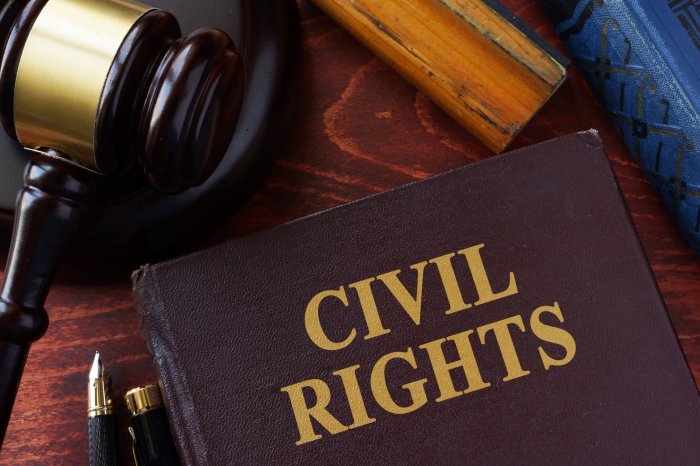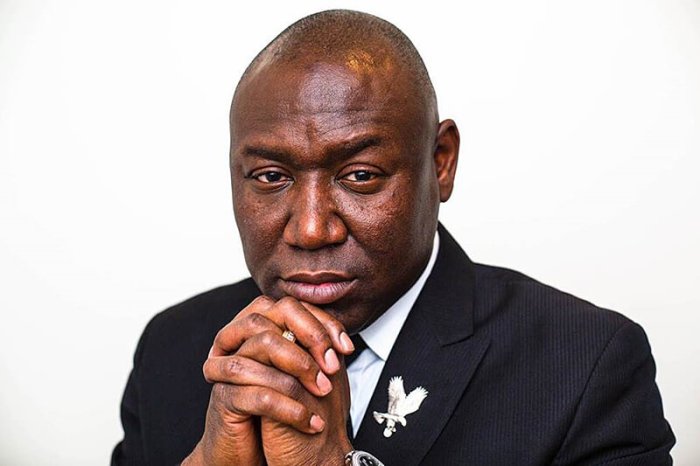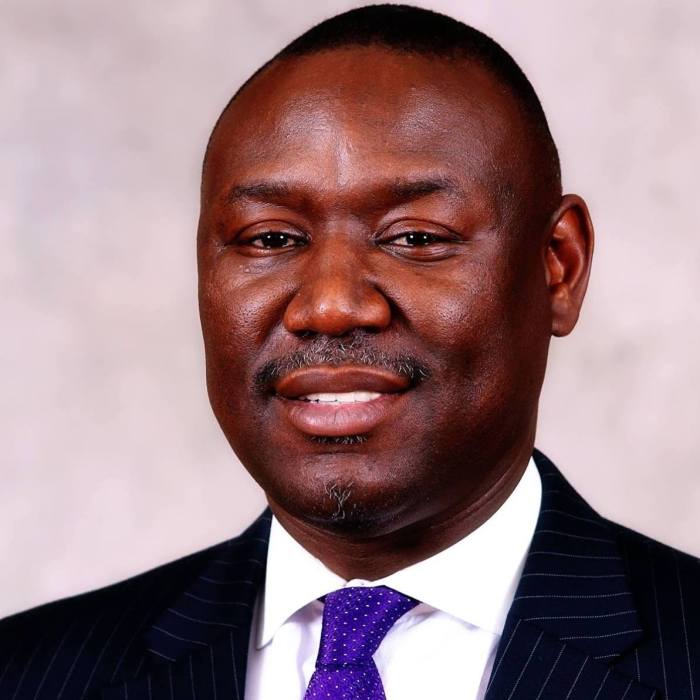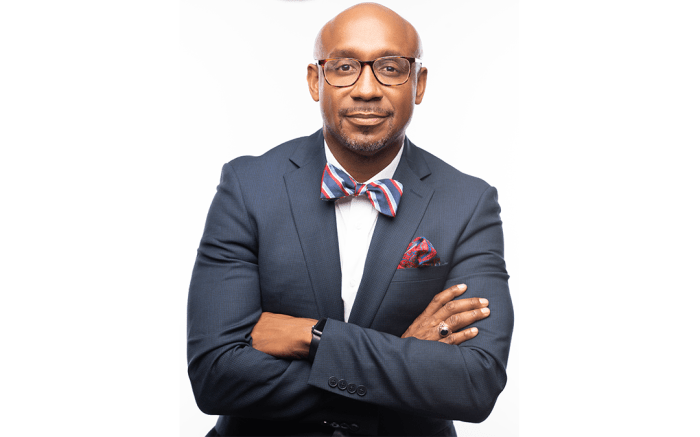Attorney for Civil Rights: Upholding the principles of justice and equality, they stand as beacons of hope for those whose rights have been violated. Their unwavering commitment to protecting the rights of all individuals is a testament to their dedication to creating a more just and equitable society.
In this comprehensive guide, we delve into the multifaceted world of civil rights law, exploring the legal framework, enforcement mechanisms, remedies, and challenges faced by attorneys in this field. We will also shed light on the ethical considerations, skills, and qualities that define an effective civil rights attorney.
Legal Framework

The legal framework for civil rights in the United States is based on the Constitution and federal and state statutes. The Constitution’s 14th Amendment guarantees equal protection under the law, and the Civil Rights Act of 1964 prohibits discrimination based on race, color, religion, sex, or national origin.
Types of Civil Rights Violations
There are many different types of civil rights violations, including:
- Discrimination: This occurs when someone is treated differently based on their race, color, religion, sex, or national origin. Discrimination can take many forms, such as being denied a job, housing, or education.
- Harassment: This occurs when someone is subjected to unwelcome conduct that is based on their race, color, religion, sex, or national origin. Harassment can be verbal, physical, or sexual.
- Hate crimes: These are crimes that are motivated by bias against a particular group of people, such as race, religion, or sexual orientation.
Landmark Civil Rights Cases
There have been many landmark civil rights cases in the United States, including:
- Brown v. Board of Education (1954): This case ruled that segregation of public schools was unconstitutional.
- Loving v. Virginia (1967): This case ruled that laws prohibiting interracial marriage were unconstitutional.
- Obergefell v. Hodges (2015): This case ruled that same-sex couples have the right to marry.
Role of an Attorney

In civil rights cases, attorneys play a critical role in representing individuals whose rights have been violated. They provide legal guidance, advocate for their clients’ interests, and help them navigate the complex legal system.
Representing clients in civil rights cases requires attorneys to adhere to strict ethical considerations. They must prioritize their clients’ interests, maintain confidentiality, and avoid conflicts of interest. Additionally, attorneys must be sensitive to the emotional and social impact of civil rights violations on their clients.
Successful Civil Rights Attorneys and Their Strategies
- Thurgood Marshall:Led the legal team that argued and won the landmark case Brown v. Board of Education, which ended racial segregation in public schools.
- Bryan Stevenson:Founded the Equal Justice Initiative, a non-profit organization that provides legal representation to individuals who have been wrongly convicted or sentenced to death.
- Michelle Alexander:Author of “The New Jim Crow,” which examines the systemic racism in the criminal justice system.
Skills and Qualities of an Effective Civil Rights Attorney
- Excellent legal knowledge and research skills
- Strong communication and negotiation abilities
- Empathy and understanding of the lived experiences of marginalized communities
- Passion for social justice and a commitment to fighting discrimination
- Resilience and perseverance in the face of challenges
Challenges Faced by Civil Rights Attorneys in Today’s Society
- Increased polarization and resistance to civil rights laws
- Underfunding of legal aid organizations
- Attacks on the independence of the judiciary
- Lack of diversity in the legal profession
Step-by-Step Guide to Becoming a Civil Rights Attorney
- Earn a bachelor’s degree
- Attend law school and focus on civil rights law
- Gain experience through internships or volunteer work with civil rights organizations
- Pass the bar exam and become licensed to practice law
- Join a law firm or non-profit organization that specializes in civil rights law
– Discuss the different types of remedies available in civil rights cases.
In civil rights cases, courts may award a variety of remedies to victims of discrimination or other civil rights violations. These remedies are designed to compensate victims for their losses, deter future violations, and vindicate the public interest.
The most common types of remedies in civil rights cases include:
- Injunctive relief:This remedy orders the defendant to stop or refrain from engaging in the discriminatory conduct.
- Declaratory relief:This remedy declares the rights of the parties and may be used to clarify the meaning of a statute or regulation.
- Damages:This remedy compensates the victim for their losses, such as lost wages, emotional distress, or pain and suffering.
- Attorney’s fees:This remedy awards the victim’s attorney for their fees and costs incurred in litigating the case.
Remedies
Victims of civil rights violations can seek various remedies, including compensatory damages, punitive damages, injunctions, and declaratory judgments. Compensatory damages aim to reimburse victims for their actual losses, such as lost wages, medical expenses, or emotional distress. Punitive damages are awarded to punish the violator and deter future violations.
Injunctions order the violator to stop or refrain from specific actions, while declaratory judgments clarify the legal rights and obligations of the parties involved.
Factors Considered in Awarding Damages
When awarding damages, courts consider several factors, including:
- The nature and severity of the violation
- The intent of the violator
- The plaintiff’s actual and emotional damages
Advocacy and Social Change
Attorneys play a critical role in advocating for civil rights reforms and shaping public policy. Their expertise in the legal system and understanding of civil rights laws empower them to champion the cause of marginalized communities and push for systemic change.
Influencing Public Policy
Attorneys use their legal knowledge to draft legislation, testify before legislative bodies, and engage in public discourse to influence policy decisions. They analyze existing laws, identify loopholes, and propose amendments or new laws to address emerging civil rights issues. By providing expert testimony and legal arguments, attorneys help shape the legislative agenda and ensure that civil rights are protected.
Pro Bono and Legal Aid
Pro bono and legal aid organizations play a critical role in ensuring access to justice for victims of civil rights violations. They provide essential legal services to those who cannot afford to hire an attorney, helping to level the playing field and protect the rights of the most vulnerable members of our society.
There are a variety of pro bono and legal aid services available, including direct representation, impact litigation, and policy advocacy. Direct representation involves providing legal assistance to individual clients in civil rights cases. Impact litigation seeks to bring about systemic change through lawsuits that challenge discriminatory laws or practices.
Policy advocacy involves working with policymakers to develop and implement laws and policies that protect civil rights.
Examples of Successful Pro Bono and Legal Aid Programs
- NAACP Legal Defense and Educational Fund: Founded in 1940, the NAACP LDF is one of the nation’s leading civil rights organizations. It has a long history of fighting for racial justice, including landmark cases such as Brown v. Board of Education.
- Southern Poverty Law Center: Founded in 1971, the SPLC is a non-profit legal advocacy organization that fights hate and bigotry. It has successfully litigated numerous cases on behalf of victims of hate crimes and discrimination.
- Legal Aid Society: Founded in 1876, the Legal Aid Society is the nation’s oldest and largest provider of legal aid to low-income New Yorkers. It provides a wide range of legal services, including civil rights representation.
Despite the important work they do, pro bono and legal aid organizations face a number of challenges, including funding limitations and the need for more attorneys to volunteer their time. Funding limitations can make it difficult for these organizations to provide the full range of services needed by their clients.
The need for more attorneys to volunteer their time can make it difficult to meet the demand for legal assistance.
Solutions to Address Challenges
- Increasing funding for legal aid programs: One way to address the challenges faced by pro bono and legal aid organizations is to increase funding for these programs. This could be done through government grants, private donations, or a combination of both.
- Encouraging more law firms to adopt pro bono policies: Another way to address the challenges faced by pro bono and legal aid organizations is to encourage more law firms to adopt pro bono policies. This could involve requiring attorneys to donate a certain number of hours to pro bono work each year or providing financial incentives for attorneys to do so.
By addressing these challenges, we can ensure that pro bono and legal aid organizations have the resources they need to continue providing essential legal services to victims of civil rights violations.
Intersectionality

Intersectionality, coined by Kimberlé Crenshaw, is a theoretical framework that examines how different forms of discrimination intersect and overlap. In the context of civil rights law, intersectionality recognizes that individuals can face multiple forms of discrimination based on factors such as race, gender, sexual orientation, and disability.
By considering these intersecting identities, attorneys can better understand the unique challenges faced by marginalized communities and develop strategies to address them.
Challenging Systemic Barriers
Intersectionality can be used to challenge systemic barriers that perpetuate discrimination. For example, in the case of Brown v. Board of Education, the Supreme Court recognized that racial segregation in public schools created an unequal educational environment that violated the Equal Protection Clause of the Fourteenth Amendment.
By considering the intersection of race and education, the Court was able to dismantle a system that had historically excluded Black students from equal opportunities.
Policy Changes for Equity and Inclusion
Intersectionality can also inform policy changes that promote equity and inclusion. For example, the passage of the Americans with Disabilities Act (ADA) was influenced by the recognition that individuals with disabilities face discrimination in multiple areas of life, including employment, housing, and transportation.
The ADA prohibits discrimination based on disability and requires reasonable accommodations to ensure equal access to opportunities.
Landmark Cases
Intersectionality has shaped legal strategies and outcomes in landmark cases. In the case of Kimberlé Crenshaw v. Harvard Law School, Crenshaw argued that the law school’s admissions process discriminated against women of color. The court agreed, finding that Harvard’s use of a single admissions standard failed to account for the unique challenges faced by women of color in higher education.
Historical Context
Civil rights law in the United States has a long and complex history, dating back to the Reconstruction Era after the Civil War. During this period, the Fourteenth and Fifteenth Amendments to the Constitution were passed, granting African Americans citizenship and the right to vote.
However, these rights were often denied in practice, leading to the Jim Crow era of segregation and discrimination.
The Civil Rights Movement of the 1950s and 1960s brought about major changes in civil rights law. The Civil Rights Act of 1964 outlawed discrimination based on race, color, religion, sex, or national origin in employment, public accommodations, and government programs.
The Voting Rights Act of 1965 prohibited racial discrimination in voting and established federal oversight of voter registration and elections in areas with a history of discrimination.
Key Events and Figures, Attorney for civil rights
- Brown v. Board of Education (1954): This Supreme Court case ruled that racial segregation of public schools was unconstitutional, overturning the Court’s previous decision in Plessy v. Ferguson (1896) that had established the “separate but equal” doctrine.
- Loving v. Virginia (1967): This Supreme Court case struck down state laws that prohibited interracial marriage, holding that such laws violated the Equal Protection Clause of the Fourteenth Amendment.
- Martin Luther King, Jr.: A prominent civil rights leader who advocated for nonviolent resistance to discrimination and segregation.
- Rosa Parks: An African American woman who refused to give up her seat on a public bus to a white man, sparking the Montgomery Bus Boycott and the Civil Rights Movement.
Current Trends

Civil rights law is constantly evolving, with new trends emerging all the time. Two of the most significant trends in recent years are the increasing use of technology and social media in the enforcement of civil rights laws, and the growing recognition of the intersectionality of civil rights issues.
Technology and Social Media
Technology and social media are playing an increasingly important role in the enforcement of civil rights laws. Social media platforms, in particular, have become powerful tools for activists and advocates to raise awareness of civil rights issues, organize protests, and mobilize support for legislative change.For example, the Black Lives Matter movement has used social media to great effect to raise awareness of police brutality and racial profiling.
The movement has also used social media to organize protests and demonstrations, and to pressure elected officials to take action on police reform.
Intersectionality
The intersectionality of civil rights issues is another important trend in recent years. Intersectionality refers to the idea that different forms of discrimination and oppression are interconnected and cannot be understood in isolation. For example, a woman of color may experience discrimination based on both her race and her gender.The recognition of intersectionality has led to a more nuanced understanding of civil rights issues and has helped to shape new strategies for addressing them.
For example, the Equal Employment Opportunity Commission (EEOC) now recognizes that discrimination based on sexual orientation or gender identity can also be a form of race discrimination.
Comparative Law
Comparative law plays a crucial role in the development of civil rights law in the United States. By examining the civil rights laws of other countries, we can gain valuable insights into different approaches to protecting individual rights and freedoms.
This comparative analysis allows us to identify best practices, learn from the experiences of others, and inform the ongoing evolution of our own legal framework.
One key similarity between the civil rights laws of the United States and those of other countries is the recognition of fundamental human rights and freedoms. Many countries have constitutional provisions or international treaties that guarantee the right to life, liberty, equality, and due process of law.
However, there are also significant differences in the specific protections and remedies provided under different legal systems.
International Human Rights Law
- Provides a framework for protecting human rights worldwide.
- Includes treaties such as the Universal Declaration of Human Rights and the International Covenant on Civil and Political Rights.
- These treaties establish minimum standards for the treatment of individuals and provide a basis for holding governments accountable for violations.
European Union Law
- Protects the rights of individuals within the European Union.
- Includes the European Convention on Human Rights and the Charter of Fundamental Rights of the European Union.
- These instruments provide strong protections for civil and political rights, including the right to a fair trial, freedom of expression, and the prohibition of discrimination.
Comparative Analysis
- Comparative analysis of civil rights laws can reveal different approaches to issues such as:
- The definition of protected classes
- The scope of prohibited discrimination
- The availability of remedies for violations
- By understanding these differences, we can identify areas where our own laws can be strengthened or improved.
International Law
International law plays a crucial role in protecting civil rights by providing a framework for states to respect and uphold the fundamental rights and freedoms of individuals. Numerous international treaties and conventions address civil rights issues, including the Universal Declaration of Human Rights, the International Covenant on Civil and Political Rights, and the Convention on the Elimination of All Forms of Discrimination against Women.
These instruments establish minimum standards for the protection of civil rights and provide mechanisms for monitoring and enforcing these standards.
Enforcement of International Law
International law has been instrumental in enforcing civil rights protections in various ways. The European Convention on Human Rights has been used to protect freedom of expression, while the Inter-American Court of Human Rights has played a vital role in protecting the rights of indigenous peoples.
These cases demonstrate the ability of international law to transcend national boundaries and hold states accountable for violations of civil rights.
Challenges and Limitations
However, using international law to protect civil rights also faces challenges and limitations. The principle of state sovereignty poses a significant hurdle, as states are generally reluctant to cede their authority to international bodies. Additionally, enforcing international law in domestic courts can be difficult, as national courts may not recognize or give effect to international obligations.
Role of Non-Governmental Organizations
Non-governmental organizations (NGOs) play a critical role in promoting and enforcing international law for the protection of civil rights. They monitor compliance with international standards, provide legal assistance to victims of human rights violations, and advocate for the adoption and implementation of stronger civil rights protections.
NGOs often collaborate with international organizations and national governments to ensure that civil rights are respected and upheld.
Education and Training
Attorneys seeking specialization in civil rights law can access various education and training programs tailored to their needs. These programs equip individuals with the knowledge, skills, and experience necessary to effectively navigate the complex legal landscape of civil rights litigation.Continuing education is crucial for civil rights attorneys to stay abreast of evolving laws, case precedents, and best practices.
Seminars, workshops, and conferences provide opportunities for attorneys to deepen their understanding and enhance their advocacy abilities.
Successful Civil Rights Attorneys and Education Programs
Numerous renowned civil rights attorneys have participated in education and training programs, contributing significantly to the field. For instance, the late Constance Baker Motley, a trailblazing civil rights attorney, earned her law degree from Columbia University and participated in the NAACP Legal Defense and Educational Fund’s training program.
Her legal acumen and advocacy skills played a pivotal role in the desegregation of schools and the advancement of civil rights.
Ethical Considerations
When representing clients in civil rights cases, attorneys must adhere to strict ethical guidelines. These considerations are crucial for maintaining the integrity of the legal system and ensuring the fair and just representation of clients.
Avoiding conflicts of interest is paramount. Attorneys must carefully assess potential conflicts before taking on a case. This includes any financial, personal, or professional relationships that could impair their ability to represent their client zealously and effectively.
Ethical Dilemmas
- Representing clients with opposing interests in the same or related cases.
- Accepting gifts or favors from clients that could influence their judgment.
- Disclosing confidential client information without their consent.
- Engaging in ex parte communications with opposing counsel without the knowledge and consent of their client.
Case Studies: Attorney For Civil Rights
Case studies offer valuable insights into the practical application of civil rights law. They showcase the strategies employed by attorneys, the complexities of the legal system, and the impact of landmark cases on civil rights advancements.
These case studies provide a rich source of learning, enabling us to understand the challenges and successes in the pursuit of justice and equality.
Brown v. Board of Education
Strategies:Legal challenges based on the Equal Protection Clause of the Fourteenth Amendment, amicus briefs from prominent organizations, and grassroots mobilization.
Impact:Overturned the “separate-but-equal” doctrine, leading to the desegregation of public schools and paving the way for further civil rights victories.
Loving v. Virginia
Strategies:Legal arguments against state laws prohibiting interracial marriage, based on the Equal Protection and Due Process Clauses.
Impact:Struck down laws against interracial marriage, recognizing the fundamental right to marry and advancing the cause of racial equality.
Obergefell v. Hodges
Strategies:Legal challenges based on the Equal Protection and Due Process Clauses, amicus briefs from diverse organizations, and public advocacy campaigns.
Impact:Legalized same-sex marriage nationwide, recognizing the fundamental right to marry for all couples and expanding the definition of family.
Resources
Staying up-to-date on the latest developments in civil rights law is essential for attorneys who specialize in this field. Several resources are available to help attorneys do just that.
These resources include:
Websites
Articles
Other Materials
- American Bar Association: Human Rights Magazine
- American Bar Association: Civil Rights Reports
- Legal Information Institute: Civil Rights
These resources provide attorneys with access to the latest news, analysis, and commentary on civil rights law. They can also help attorneys find resources for their clients and connect with other attorneys who specialize in this field.
Closing Notes
As we conclude our discussion on Attorneys for Civil Rights, it is imperative to recognize their invaluable contributions to society. Their tireless efforts have shaped landmark legal precedents, protected the rights of marginalized communities, and advanced the cause of justice for all.
Their unwavering dedication serves as an inspiration to us all, reminding us of the importance of fighting for what is right and ensuring that every individual has an equal opportunity to thrive.
FAQ Compilation
What is the role of an Attorney for Civil Rights?
An Attorney for Civil Rights represents individuals whose civil rights have been violated, ensuring that their legal rights are protected and advocating for their fair treatment under the law.
What are some common types of civil rights violations?
Common types of civil rights violations include discrimination based on race, gender, religion, disability, or national origin, as well as violations of due process rights, freedom of speech, and the right to vote.
What are the key qualities of an effective civil rights attorney?
Effective civil rights attorneys possess strong legal knowledge, excellent communication and advocacy skills, a deep commitment to social justice, and a relentless determination to fight for the rights of their clients.